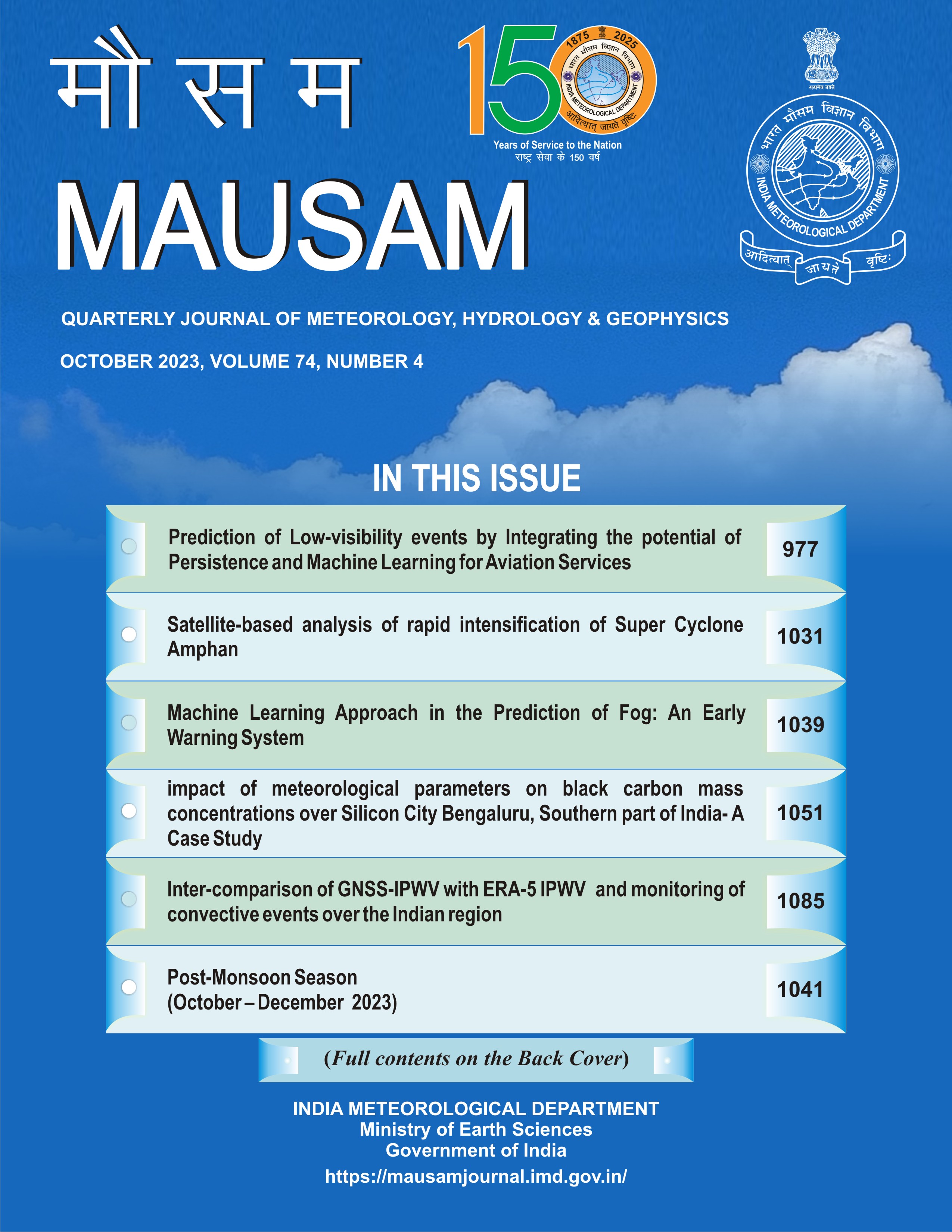Analyzing the heavy rainfall event of July 2011 in Niigata using ground, satellite and radar rainfalls
DOI:
https://doi.org/10.54302/mausam.v75i4.3566Abstract
In recent years the application of radar and satellite precipitation observations has become increasingly useful in poorly gauged areas. However, understanding the relationships between these data sources and ground observations is vital to correct the datasets and improve their application in hydrological studies. In this study we analyzed the spatial and temporal relationships between Global Satellite Mapping of Precipitation-Near Real Time (GSMaP_NRT) data set with radar and ground observations at downstream of Shinano River, Japan. GSMap_NRT observation showed better relationship with ground observations for longer-duration observations (eg. 3, 6, 12 and 18 hours) than hourly observations. The GSMap_NRT showed excellent relationship with ground rainfall at satellite observation time compared to non-observation time. Comparison of radar observations at various time scales and spatial resolutions showed that radar estimates at smaller-time-interval ratio and lower-spatial-scale ratio are better than longer-time-interval ratio and higher-spatial-scale ratio. We also observed that radar precipitation estimate well-represent the areal averaged precipitation of ground observations. Results from this study showed that radar precipitation estimates could serve as very important input to improve merging of ground and satellite precipitation as well satellite rainfall improvement systems.
Downloads
Published
How to Cite
Issue
Section
License
Copyright (c) 2024 MAUSAM

This work is licensed under a Creative Commons Attribution-NonCommercial 4.0 International License.
All articles published by MAUSAM are licensed under the Creative Commons Attribution 4.0 International License. This permits anyone.
Anyone is free:
- To Share - to copy, distribute and transmit the work
- To Remix - to adapt the work.
Under the following conditions:
- Share - copy and redistribute the material in any medium or format
- Adapt - remix, transform, and build upon the material for any purpose, even
commercially.



